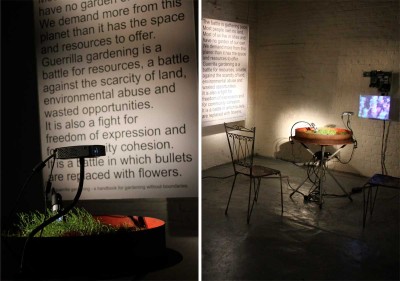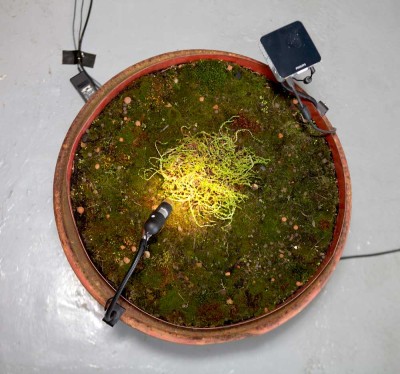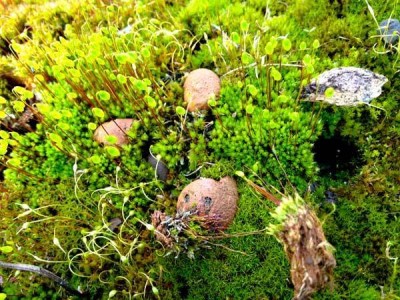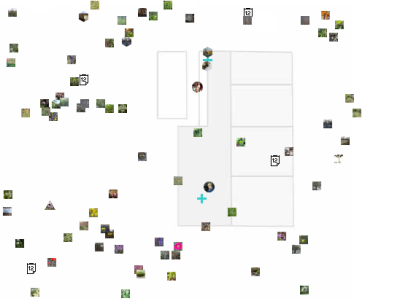Presentation of the Connected OpenGreens database in installation setup. A miniature garden in a rusty metal table becomes alive with a close reading by a microscope. The image is magnified and projected on the wall, people can sit and meditate whilst being absorbed by the life projection.
The work was presented on the international conference ‘Growth in art, society and culture’, organized within the framework of the project TIK (Time Inventors’ Kabinet) and as an accompanying program of Science and Technology Week 2011 in Prague.
Could one say that art degenerates as it approaches gardening?
(Robert Smithson – A Sedimentation of the Mind: Earth Projects, 1968)
The aim of the conference is to look at the changing approaches to the soil, and the subjects of growth and growing in society, culture and art, in urban and rural contexts. At the same time, we try to challenge the simplyfiying concepts of nature and natural, as presented in the arts. It is often in the arts though, where the various influential phantasies concerning nature emerge.
We want to confront artistic approaches with views by ecologists, biologists, eco-activists, economists, non profit organizations and foundations, about subjects like: (city) gardening and agriculture, transformation of city flora and fauna, relationship between urban and rural, philosophies of the garden, sustainability of cities and villages, long-term growth in economics (participatory economics, economical de-growth, natural capitalism etc.).
Artists often comment on the dissolving of the natural, cultural, and technological. Artistic approaches are often used as a political tool in the praxis of transforming the environment. Can aesthetics play a key role in the process. How and for what purposes are the newly emerging green spaces used by artists? To what extend are visions of the cities-as-gardens and its inhabitants in the roles of gardeners, just another utopian phantasy? How do the actual city forms of gardening look like: green spaces with open access (open greens), guerilla gardening, rooftop or vertical gardens, (so called) beautifying alliances. How are the permacultural processes reflected in the city planning? What are the most inspiring models of ecological towns and villages?




